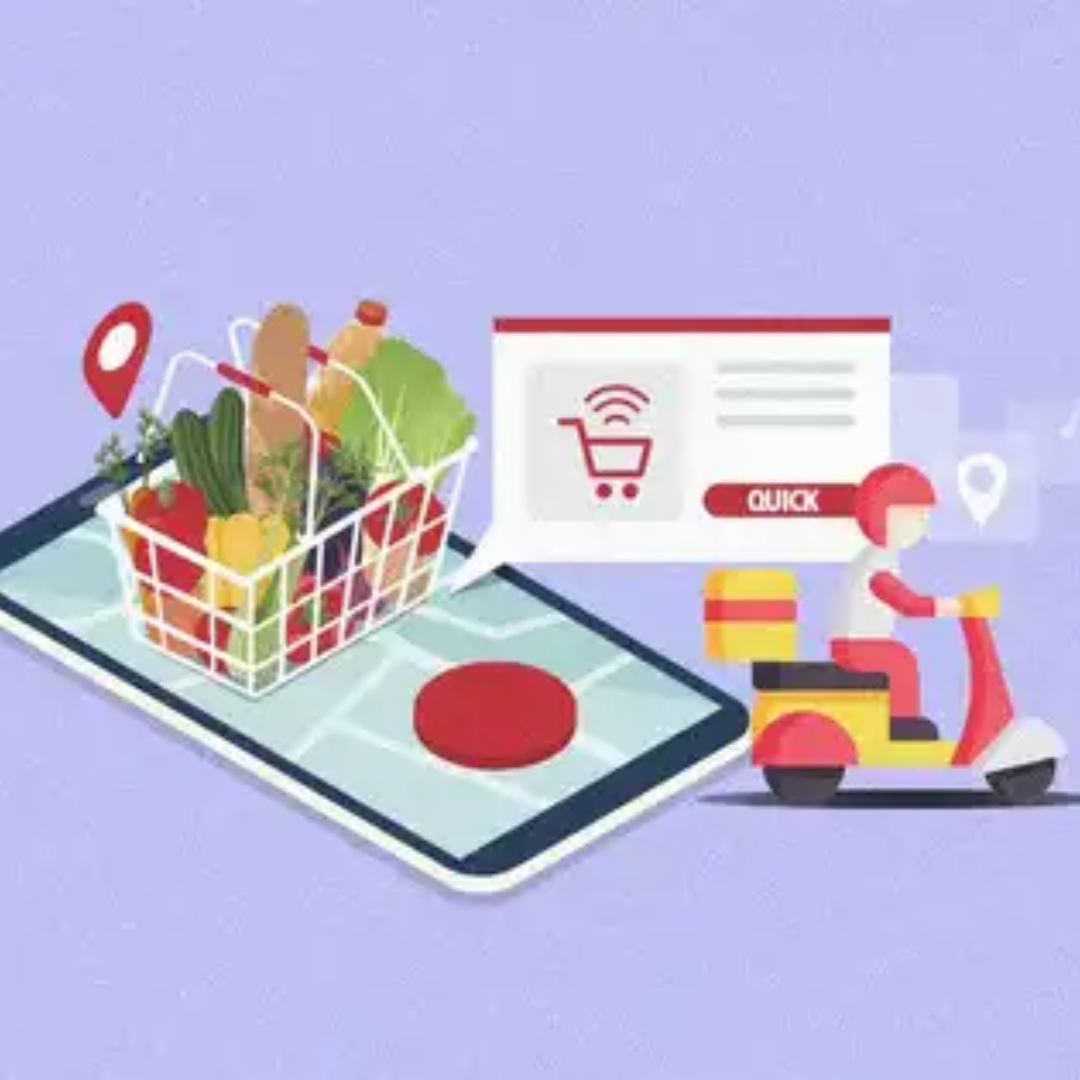
India’s Quick Commerce Market to Reach ₹2 Lakh Crore by FY28
Introduction
The Hyper-Speed Future of Shopping Is Already Here
In the race against time, India’s retail industry is seeing a new frontrunner emerge: Quick Commerce (Q-commerce). With the promise of delivering essentials in just 10–30 minutes, Q-commerce is redefining convenience and reshaping consumer expectations. From groceries to personal care and even electronics, India’s urban and semi-urban population is embracing this shift wholeheartedly.
According to industry estimates, India’s quick commerce market is set to skyrocket from around ₹30,000 crore in FY24 to a staggering ₹2 lakh crore by FY28, registering a CAGR of over 50%. That’s not just growth—that’s a retail revolution in fast-forward mode.
What Is Quick Commerce?
Quick commerce refers to ultra-fast delivery services that aim to fulfill customer orders—typically daily-use items—within 10 to 30 minutes. It leverages dark stores, micro-warehouses, and location intelligence to ensure fast fulfillment from the nearest hub.
Unlike traditional e-commerce (which focuses on scheduled deliveries), Q-commerce is built for instant gratification—think of it as the digital avatar of your neighborhood kirana, only much faster and tech-enabled.
Why Is Q-Commerce Booming in India?
Time-Starved Urban Population
With hectic work schedules, traffic congestion, and rising aspirations, Indian consumers—especially Gen Z and Millennials—are prioritizing convenience over price. Quick commerce addresses this perfectly.Mobile-First Economy
Over 700 million smartphone users and widespread access to digital payments make it easier than ever to browse, order, and receive products within minutes.Changing Lifestyle & Household Needs
Consumers are making smaller, more frequent purchases instead of monthly bulk buying. Q-commerce allows spontaneous, need-based buying—like ordering ice cream during a movie night or shampoo right before a trip.Heavy Investments & Consolidations
Players like Blinkit (Zomato), Zepto, Swiggy Instamart, and BigBasket Now have raised substantial capital and are aggressively expanding dark stores, tech capabilities, and service zones.
Market Snapshot: FY24 vs FY28 (Projected)
| Metric | FY24 (Est.) | FY28 (Projected) |
|---|---|---|
| Market Size | ₹30,000 Cr | ₹2,00,000 Cr |
| CAGR | – | 50%+ |
| Avg. Delivery Time | 25 mins | 10–15 mins |
| Penetrated Cities | 25+ | 100+ |
| Active Users | 30 million+ | 120 million+ |
What’s in the Cart? Most Ordered Items via Q-Commerce
Fresh Fruits & Vegetables
Dairy & Beverages
Packaged Food & Snacks
Personal Care & Hygiene
Medicines & Baby Products
Home essentials and even fashion basics
Who’s Winning the Q-Commerce Game?
Zepto—India’s first unicorn in quick commerce, known for its 10-minute delivery promise and strong backend tech.
Blinkit (Zomato)—Rapid expansion through dark stores and innovative SKUs.
Swiggy Instamart—Strong presence through bundled value packs and loyalty programs.
BigBasket Now—Leveraging the Tata Ecosystem for Competitive Reach.
Reliance JioMart Express—backed by Kirana digitization and massive retail muscle.
Challenges on the Road
Despite the boom, the Q-commerce sector is not without hurdles:
Unit Economics: Delivering in 10 minutes means higher logistics and manpower costs.
Inventory Management: Keeping dark stores stocked with fast-moving SKUs is a constant challenge.
Profitability Pressure: Companies are burning capital for customer acquisition and operational scale.
Regulatory Scrutiny: Rising concerns about delivery rider safety, labor laws, and urban traffic impact.
The Road Ahead: What to Expect by FY28
Tier-II & III City Expansion: As digital penetration deepens, demand will spread beyond metros.
AI-Driven Fulfillment: Predictive analytics and AI will optimize product stocking and route planning.
Voice & Chat Commerce: Ordering via voice assistants and chatbots will gain momentum.
Sustainability Shift: Eco-friendly packaging and electric delivery fleets will take center stage.
Conclusion
India’s quick commerce market is no longer just a pandemic-era experiment—it’s an integral part of modern retail. With the right mix of technology, local insights, and customer obsession, Q-commerce is setting the tone for the next-gen shopping experience.
As we race towards ₹2 lakh crore by FY28, one thing is clear: In India, speed isn’t just a service feature anymore—it’s a consumer expectation.


